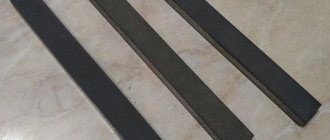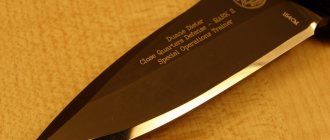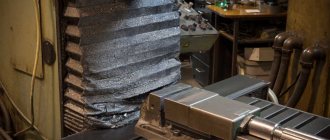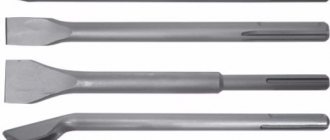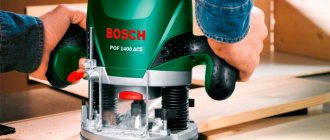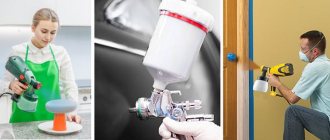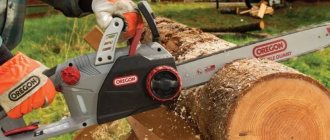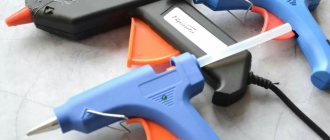Meet a new article from Arsenal Masters RU specialists. All about sharpening stones. Classification, types of stones. Recommendations and advice on the selection, storage and alignment of stones, and the process of sharpening tools.
There are many sharpening stones, it’s difficult to choose, and there are also many nuances and features. We have collected information on them and added tips and recommendations. We are waiting for your feedback, share your experience!
Classification of sharpening stones
There are synthetic and natural stones.
- Synthetic stones are divided according to the type of material into water, ceramic and diamond.
- Natural stones work with water or oil.
The wide selection of stones is also due to the different grain sizes of abrasive stones. This allows you to remove chips, remove minor damage, and bring the sharpened surface to “zero.” In practice, water stones are more often used.
The popularity of manual sharpening is easily explained:
- The hardness and edge of the steel does not deteriorate because no heat is generated.
- A huge selection of grain sizes allows for any fine sharpening.
- Precise cutting geometry (no rounded chamfer surfaces such as felt or rubber discs).
- No expensive equipment needed.
- In their practice, Masters reach perfection!
How to Make Dull Blades Sharp: Dull blades have a rounded edge on the cutting edge, therefore, when sharpening, it is necessary to remove material from the chamfer surfaces to again achieve the perfect “intersection” of the 2 planes of the blade chamfer.
Synthetic water stones
These are the most popular and productive abrasive stones. They have an open-pore microstructure with the inclusion of homogeneous particles; the abrasive grain is quickly crushed. Requires correction when worn.
Structure of synthetic abrasive stones Sharpening stones mainly consist of a binder (matrix) in which abrasive particles (alumina, carbides, natural semi-precious stones, diamond dust) are embedded.
The effectiveness of the stone depends on the combination of the hardness of the binder and the quality of the abrasive particles. The binding agents used in synthetic water stones are generally dye-like substances, whose hardness can be determined by composition and firing temperature level. Open structure Closed structure Abrasive stone materials
Silicon carbide abrasive is very effective and is therefore used for coarse abrasive stones, while corundum is used for finer abrasive stones.
Binder
The soft bond allows the abrasive particles to be constantly exposed during use, making the stone very effective. These stones are ideal for extremely hard low alloy steels. Tool steels with coarse-grained alloy components (for example, chromium and vanadium) require a stone that wears slower and holds its shape longer. The binder is stronger - the stone remains flat longer.
HOW TO USE SYNTHETIC WATER STONES
Before use, stones must be soaked in water for 10-15 minutes. Water serves as a washing medium, which prevents clogging of the stone pores with abrasive particles and preserves its abrasive properties. If it is not sufficiently rinsed with water, the abrasive debris becomes a paste that reduces the abrasive properties of the stone. ON A NOTE! Professionals actively use this fact. By using it, they achieve a finer abrasion, compensating for the large steps in grit when moving from a coarser stone to a fine-grained stone. Most aqueous (water) stones have a fairly soft, open-pore compound that continually exposes fresh abrasive particles during sharpening, resulting in high efficiency. As a result of wear, regular adjustment of water stones is required.
Item: MT #1010 Sharpening Stone #1000Japanese abrasive stone Suehiro Cerax 1000 grit on a stand with nagura M00013149 | Article: MT #3000 Sharpening Stone #3000Japanese sharpening abrasive 3000 grit Suehiro New Cerax 206x73x23mm stand with Suehiro nagura | Article: MT #GMN-150Sharpening abrasive 15000 Suehiro Gokumyo 205 x 73 x 20 mm stand with restoration stone Suehiro |
Features of the mineral
The mineral is not found in its pure form, but in complex chemical compounds it permeates the entire inorganic world of the planet.
Present in:
- rocky rocks,
- sand,
- clay,
- quartz.
Two-thirds of the earth's crust consists of silicates containing silicon. The role of the mineral in the process of water purification is to suppress bacteria that cause rotting, fermentation, and neutralize chlorine.
Ancient philosophers wrote about the beneficial effects of silicon. In the old days, they lined the walls and bottom of wells with silica to obtain purified water.
Scientists established the property of a microelement to precipitate heavy metals, remove radionuclides, and pesticides half a century ago.
Natural silica, or silicon dioxide, is colorless crystals of high hardness and strength. The mineral gives the liquid unique characteristics.
Ceramic stones
A relative innovation are ceramic water stones with particularly high wear resistance for professional use. Ceramic stones have a very strong bond and show little wear. However, to achieve good sharpening performance, it is necessary to use very high quality and wear-resistant abrasive particles (such as Shapton). Shapton ceramic stones hardly absorb water. With them, 1 minute of soaking is enough.
Advantages
The key advantage of diamond whetstones is that even an abrasive that has encountered a large number of blades along its path remains completely flat. But this is not their only advantage:
- Diamond grains have sharpened edges, compared to other abrasives, and due to this they are practically not deformed during operation;
- Diamond bars are very durable and will not disintegrate even due to a strong blow, like, for example, Japanese stones;
- sharpening with such an abrasive does not require special oils or constant moistening; it is enough to moisten it a little before starting work;
- the diamond bar does not become clogged with metal grains when used, and to clean it you just need to rinse it in liquid and wipe it dry;
- Due to the increased speed of metal grinding, the used plane of the bar retains its area and length in its original form for a long period of time.
Diamond stones
. As an alternative to Japanese water stones, you can use diamond sharpening stones. In these whetstones, abrasive diamond granules are deposited in a nickel matrix as a thin layer on a metal substrate. They provide high flatness, durability, provided that the diamonds are of high quality (monocrystalline). The diamonds are applied to an extremely flat, warp-resistant and unbreakable base plate. Thus, diamond stones are extremely wear-resistant and do not chip like abrasive grains. High-quality monocrystalline diamonds guarantee remarkable sharpening speed even when working with the hardest high-alloy tool steels. It is recommended to moisten diamond stones with water and grind with light pressure. Made from high-quality single-crystal diamonds, DMT stones (USA) are especially wear-resistant and are famous for their perfectly smooth surface. DiaSharp 220 COARSE (Coarse) DMT D8X stone is recommended as a complement to water stones. It's great for finishing the backs of flat chisels, chisels, or leveling water stones. Warning: Avoid cheap products that are usually made from (short-lived) polycrystalline diamond dust.
Article: DMT D8EEDiamond abrasive stone DiaSharp 200 x 76 mm 8000 grit beige DMT D8EE | Article: DMT W250EFWBDouble-sided diamond abrasive stone DMT DuoSharp 250 x 100 mm 1200 / 600 grit X-Fine / Fine | Article: DSS-115FCMT DSS-115F Diamond whetstone, fine grain D25 in leather case 115 x 25 x 3 mm red |
Main types of knives
Before you start sharpening a knife, you need to find out what material it is made of. There are several types of knives:
- Carbon steel knives are the most affordable, made from an alloy of iron and carbon, easy to sharpen and remain sharp for a long time. Among the disadvantages, it can be noted that the knife blade oxidizes from interaction with food or an acidic environment, due to this, rust and stains appear on the knife, and food acquires a metallic taste. Over time, after plaque forms on the blade, oxidation stops.
- Low carbon stainless steel knives are made from an alloy of iron, chromium, carbon and in some cases nickel or molybdenum. Stainless steel knives are inferior in hardness to carbon steel, so they quickly become dull and require regular sharpening. The advantages include corrosion resistance.
- Knives made of high-carbon stainless steel are a higher class of knives, with a higher carbon content and additions of cobalt or vanadium. Due to the higher quality alloy, this type of knives does not require frequent sharpening and is not subject to corrosion.
- Damascus steel knives are mainly made as edged weapons, but there are also kitchen options. A Damascus steel knife is a multi-layer blade made from different high-quality alloys. The disadvantages include the high cost of knives.
- Ceramic knives have gained popularity because of their sharpness and ability not to become dull for a long time. But in addition to their advantages, ceramic knives have a significant disadvantage, which is their fragility when dropped from a height and poor resistance to fracture.
Natural water stones
Natural stones, including the Belgian Brocken or the Slovakian Rozsutec, are sedimentary or calcareous rocks with embedded corundum, oxides, quartzites or semi-precious stones (such as garnets). Due to their slightly heterogeneous structure, they combine particularly well with hand-forged steel.
Arkansas Novaculite sharpening stones are very dense and wear-resistant. They are well suited for straightening chisels for wood carving and turning tools. ATTENTION : It is not recommended to combine oil (ordinary abrasive) and water stones together, as oil reduces the effect of the stones. Look at natural stones Nagura, ARKANSAS
Article: Di 711518Natural Japanese water stone (Abrasive stone) Binsu 800-1200, 220*65*62 mm | Article: Di 711519Natural Japanese water stone (Abrasive stone) Amakusa 400-800, 220*65*65 |
Article: NB 895600Natural abrasive stone 6000-8000 100x40x12 mm Arkansas white Narex | Article: MT#NAGURA-200/711301Nagura Botan 3000 natural stone 50x40x30mm Miki Tool |
Natural oil stones
When combined with oil, some stones form a lubricating suspension that increases their effectiveness. Porous stones, for example Norton (India). The stone is usually pre-oiled, requiring only a few drops of honing oil on its surface before sharpening. Closed-cell stones only absorb small amounts of oil. A few drops of honing oil on their surface are enough. Unlike water, oil does not wash the stone, so it clogs faster. It can be cleaned by wiping it with oil. Check out Oil Stone Suehiro
Operating principle
Shungite is a high-carbon material. It contains carbon lattices and special molecules - fullerenes, which purify water, making it healthy and tasty.
Having such physical and chemical properties, it effectively filters water, draws out all harmful substances and saturates it with useful minerals. Changes the taste of water - it becomes sweetish.
The mineral has adsorbent and antibactericidal properties, purifies water from:
- harmful impurities
- heavy metals;
- from pathogenic flora;
- fungi and helminths;
- from chlorine.
Important note. The mineral is used to purify water in wells and swimming pools.
Which sharpening stones to choose
Basic level:
As a basic equipment for manual sharpening, it is recommended (recommendation of the manufacturer DICTUM) a combination of stones with grits of 1000 and 6000 grit. This combination is minimally sufficient for editing and optimal for beginners. Purchasing a combined stone 1000/6000 with these grits will save money.
Article: Di 711007Japanese combined abrasive block 1000 / 6000 150x50x25 mm Sun Tiger 711007 | Article: Di 711006Japanese combined abrasive block 1000 / 6000 207x66x36 mm King 711006 | Article: Ver 05M0901-711005-AMSharpener Veritas Sharpening System II plus Japanese abrasive whetstone combined 1000 / 6000 King |
For advanced users:
- Coarse whetstone 220 grit (No. 711999) for chipping, dressing, etc. Japanese abrasive stone 220 King 711999
- Sharpening stone with grit 1000 - 1500 - for normal sharpening. For example Natural Japanese water stone Jyo-Haku 1000-1500 711620
- The correct stone with a grit of 6000 is for polishing and straightening edges. Example Sharpening abrasive 6000 Suehiro with nagura Suehiro white MT 6000 M00014380
- Nagura Cleansing Stone
For grooved chisels - cutters - you will additionally need:
- Shaped stone with 4000 grit - for straightening the inside. Example Abrasive water stone PETROGRAD BREEZE 4000 M00015241
- Nagura Cleansing Stone
For all:
- Straightening block for precise dressing of uneven water stones (Strutting stone 100 grit 711299)
- Whetstone holder
See everything for sharpening from Dictum
Sets of sharpening stones
To provide you with the best basic equipment for different tools and steels, we have collected various sharpening sets for you. You can choose a set of sharpening stones that suits you.
Article: RN Set N4: 150, 360, 500. 1000, 1500, 2000Sharpening set PETROGRAD N4 for sharpening knives 15 x 15 x 120 mm 6 stones (150, 500, 1000, 1500, 2000, 4000 grit) | Article: M00003437-M00017823-M00014093-AMStarter set for sharpening knives, planes and chisels Petrograd No. 1: Sharpener, protractor and set of sharpening stones | Article: Arma21Starter set for sharpening knives, planes and chisels N 3: cradle box, sharpener, template, protractor and set of sharpening stones |
Flaws
It would seem that if a diamond whetstone for sharpening knives has so many advantages, why doesn’t everyone rush to quickly purchase it or use it exclusively. Everything is very simple, these abrasives have two significant disadvantages, which play an important role for sharpeners:
- quick and productive grinding of metal during sharpening in the hands of a beginner, and in some situations, even in the hands of a master, a little carelessness can seriously damage the blade;
- Another minus is the price. Diamond bars are worth an order of magnitude higher than natural stones. The reason for this is the expensive production process. Therefore, if you see inexpensive diamond bars on sale, avoid them. After a few sharpenings, such a diamond sharpener will turn into a pile of garbage.
How to use sharpening stones
During use, stones must be placed firmly on a non-slip surface or stand. To ensure stability, use a whetstone holder with non-slip rubber jaws, a rubber pad or a non-slip mat.
And Camellia oil 705281 will help you further protect carpentry, carving, and kitchen tools from corrosion.
Terminology[edit]
Although "whetstone" is often mistakenly referred to as water, which is sometimes used to lubricate such stones, the term is based on the word "sharpen", which means to sharpen a blade[1][2], rather than the word "wet". ". Nowadays, the verb " to sharpen"
but
the older term
sharpen
still .
The term kindle
is so rare in this sense that it is no longer mentioned in, for example, the Oxford Living Dictionaries. [3] [4]
Leveling the stones
When sharpening tools with straight cutting edges, it is very important that the whetstone itself is completely flat. You can check this by pressing the end of the ruler to its surface. If light penetrates through the gap, then the stone is uneven and must be polished in one of the possible ways. The simplest of them is dressing using a diamond lapping plate. You rub the well-watered stone in circles on a lapping plate until the surface is smooth. Light surfaces show smooth areas of stone, while darker areas have not yet come into contact with the leveling stone. Repeat the operation. Process until the surface becomes completely light, constantly washing off the paste. Alternatively, you can use kits with 100 grit sandpaper (soaked with water) placed on a flat granite stone slab (gabrodiabase). A specialized mesh for leveling abrasive stones functions in a similar way.
Cleaning the whetstone
During operation, the whetstone inevitably becomes contaminated. The pores of the working surface become clogged with iron dust and the remains of crumbled abrasive grains.
In order to clean the bar, you should load it for 15-20 minutes in a warm soap-based solution. Some craftsmen simply rub the whetstone with simple soap.
After exposure, the block is washed with a sufficient amount of water, while scrubbing with a stiff brush.
If there is an ultrasonic washing machine nearby, then the bar is placed in a container with a warm soap-based solution, the ultrasonic emitter is lowered into it and left for 5 minutes. High-frequency vibrations remove all contaminants from the pores of the working surface.
Storing sharpening stones
When storing synthetic stones, it is IMPORTANT to differentiate between those that must be kept dry and those that can be kept permanently in water, it is best to use a lidded plastic tub in which the stones can be kept permanently in a water bath. Stored in water: King, Solar Tiger, etc. A little vinegar or disinfectant should be added to the water to prevent algae growth. Household detergents should not be used - they destroy the bond of the stone. To prevent cracking, sharpening stones should never be exposed to frost! When using highly calcareous water, do not let the stones dry out too often; otherwise, lime will accumulate and reduce the effectiveness of the stones.
Article: Di 711005Japanese combined abrasive stone 1000 / 6000 grit 205*50*25 mm King 711005Reviews (1) | Article: KTV abrasive 70x20x200 I-2000-V/-VBSharpening abrasive (abrasive water stone) PETROGRAD 200 x 70 x 20 mm 2000 grit | Article: MT #CR-3800 / Di 711024Combined Japanese water stone on a stand 1000 / 3000 183 x 63 x 32 mm Suehiro New Cerax |
Dry storage: Shapton, Suehiro, Naniwa, Jinzo sharpening stones, etc.
Article: MT #6000Sharpening abrasive 6000 Suehiro 206x73x23mm on a stand, with white grit | Article: Di 711533Japanese combined sharpening abrasive 1000/3000 134x40x26mm Suehiro | Article: MT #NGR-10Nagura 1000 Suehiro stone for stones 1000-2000 grit, 73x40x28 mm |
Oil sharpening stones should be handled with care. Keep them clean and free of oil, as oil prevents the stones from absorbing water, limiting their abrasive effect.
Article: MT OS-62NJapanese oil abrasive stone beveled 320 grit 25 x 6 x 2 x 100 mm Oil Stone Suehiro | Article: MT OT-13N |



